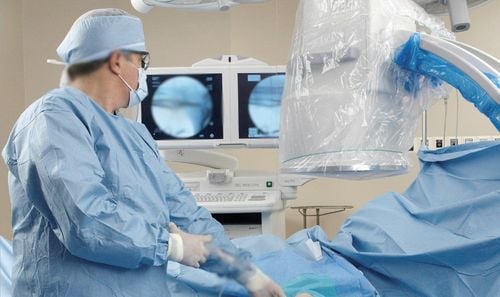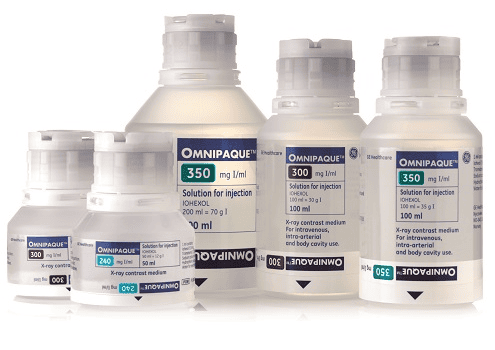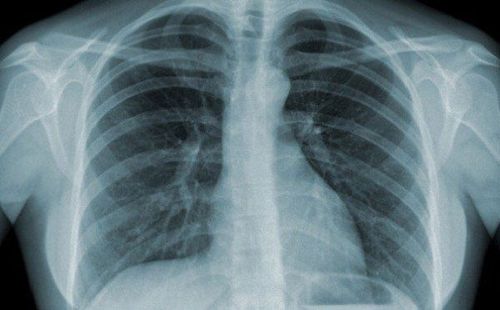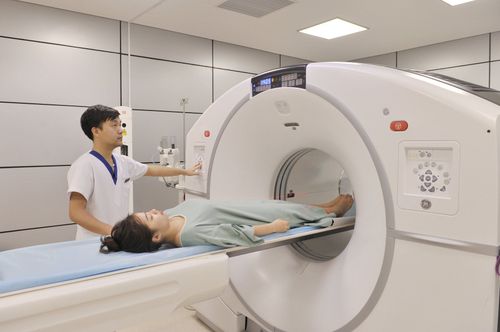This is an automatically translated article.
The article is professionally consulted by Master, Doctor Lam Thi Kim Chi - Department of Diagnostic Imaging - Vinmec Danang International General Hospital.
Are X-rays harmful to the baby? This is a problem that many parents worry about, sometimes leading to non-cooperation when the doctor prescribes an X-ray for their child. But how is the role of X-rays in Medicine, is it really harmful for babies to take x-rays... not everyone understands.
1. When to take X-ray for baby?
X-rays are radiant energy, like light or radio waves but with much higher energy levels, allowing them to penetrate the body. The images of the internal structures are then printed on photographic film or on a computer screen. Therefore, X-ray is a very common type of imaging tool, easy to perform in many places. X-ray imaging has helped improve diagnosis and treatment of health problems in pediatric patients.
Your child may need X-rays for a variety of health problems, from broken bones after a fall to unexplained abdominal pain. In particular, X-rays are especially good at providing information about hard tissues in the body, such as bones and teeth.
The procedure for taking X-rays is very quick and simple in a closed room, properly isolated to avoid radiation leakage. At the same time, children are also changed into appropriate clothes, without any metal objects on the body such as jewelry, keychains on clothes...
If the child is older, parents can guide the child to stand. or create an appropriate posture to reveal the area to be investigated. However, for very young, fussy babies, getting an X-ray can be more difficult. Sometimes it takes both parents to keep the baby in the correct position on the X-ray table. Even so, when the technician does the scan, exposure to the radiation from the X-rays won't cause any symptoms. In other words, the child has absolutely no discomfort during the X-ray.

Bé bị té ngã có thể gây chấn thương kín
2. Are X-rays for babies harmful?
Because X-ray is a very common type of imaging test, the safety is generally relatively high, so it is widely used in medical diagnosis, not only in children but also in adults. For special X-ray machines for children, technicians always pay attention to adjust the radioactive energy to a level just enough to provide the doctor with information about the internal structures of the body and precautions. minimal risk of radiation exposure. These tests expose children to low doses of radiation.
You may be worried about exposing your child to radioactive energy when taking X-rays but you also need to know that radiation is all around us all the time from light the sun and other light sources. People who often work outdoors, live in highland areas will be at greater risk of radiation exposure.
Although it has been observed that energy sources from high-energy radiation and exposure to high doses can damage living tissue through a mechanism that disrupts the stable structure of genetic material, In the cell nucleus is DNA. This is a risk factor for developing cancer later in life, but it can happen in someone who has never had an X-ray in their life!
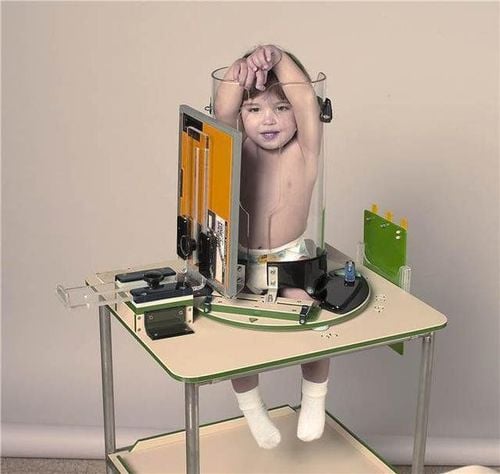
Chụp Xquang trẻ nhỏ
Meanwhile, for X-rays used in Medicine, the energy used is very low, especially when indicated with children. For example, when your child has a standard chest X-ray, the amount of radiation she has received is completely equivalent to the amount of radiation in a normal environment for 2 to 3 days. This is even less than the amount of radiation at risk of exposure when completing a flight. Therefore, doctors often advise parents not to be too worried when taking X-rays for their babies, if necessary, they may have to repeat them, because this is basically an important subclinical indication for diagnosis and treatment. treatment for children.
Besides, when the doctor ordered X-rays to be taken for organs near the parts that are sensitive to radioactive energy, due to the rapid division of cells, the technicians paid attention. Shield your child carefully to ensure that your child's risk of exposure is kept to a minimum. Such organs could be the thyroid gland in the neck, the testes in the scrotum in boys, and the ovaries in the lower abdomen in girls.
The risks from radiographs are small when compared with their benefits in disease diagnosis and treatment. However, efforts still need to be made to reduce risk by reducing unnecessary exposure to radiographs for the following reasons:
Pediatric patients are more susceptible to radiation exposure than adults, i.e. higher risk of cancer per unit dose of ionizing radiation Using equipment and exposure settings designed for adults may result in overexposure if used in children. Pediatric patients have a longer expected life expectancy than adults, so the risk of cancer is higher due to the effects of radiation exposure.
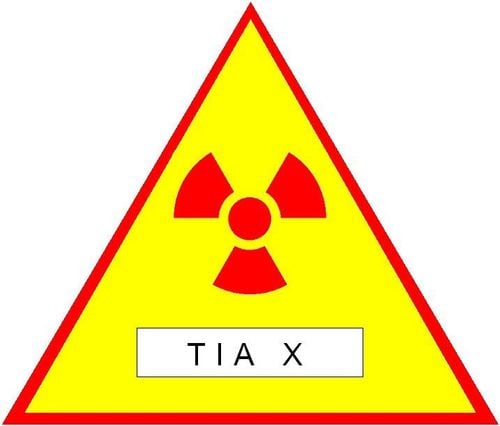
Tia X có thể gây nguy cơ nhiễm phóng xạ cho con bạn
3. What can parents do to prevent radiation exposure from X-rays to their children?
X-rays are necessary in the diagnosis and treatment of diseases. However, in order to prevent radiation exposure from X-rays for children, parents should not arbitrarily do it but only when prescribed by a doctor with clear medical purposes. In these cases, the possible risk from the X-ray is much smaller than not having or delaying the X-ray.
However, parents can also actively contribute to reducing the risk of radiation exposure for their children by doing the following: Repeat without a doctor's prescription. Inform the doctor that your child has had many X-rays in a short period of time. At the same time, provide the doctor with the X-ray films that the child has taken before for convenient comparison and comparison. Before performing an X-ray, as well as a fluoroscopy or CT scan, parents can ask the doctor for a clear health benefit in your child's medical condition. Provide the exact weight and height of the child to the technician so that the amount of radiation used can be adjusted to the lowest but still get satisfactory images. Use shields when possible, especially for very sensitive areas such as the thyroid and genitals.

Chỉ chụp X-quang cho trẻ khi có chỉ định của bác sĩ
MSc Doctor Lam Thi Kim Chi graduated with a Master's degree in Radiology - Hue University of Medicine and Pharmacy and has over 6 years of experience as a radiologist. Doctor Chi used to work at Da Nang Obstetrics and Gynecology Hospital before becoming a radiologist at Vinmec Danang International General Hospital as now
To register for examination and treatment at Da Nang General Hospital Vinmec International Department, please come directly to Vinmec medical system or register online HERE.
Reference source: webmd.com; fda.gov
Recommended video:
Periodic health check at Vinmec: Protect yourself before it's too late!
MORE:
22 frequently asked questions about X-rays Radiation levels from X-rays Effects of X-rays on the fetus Understand radiation risks from diagnostic imaging tests





